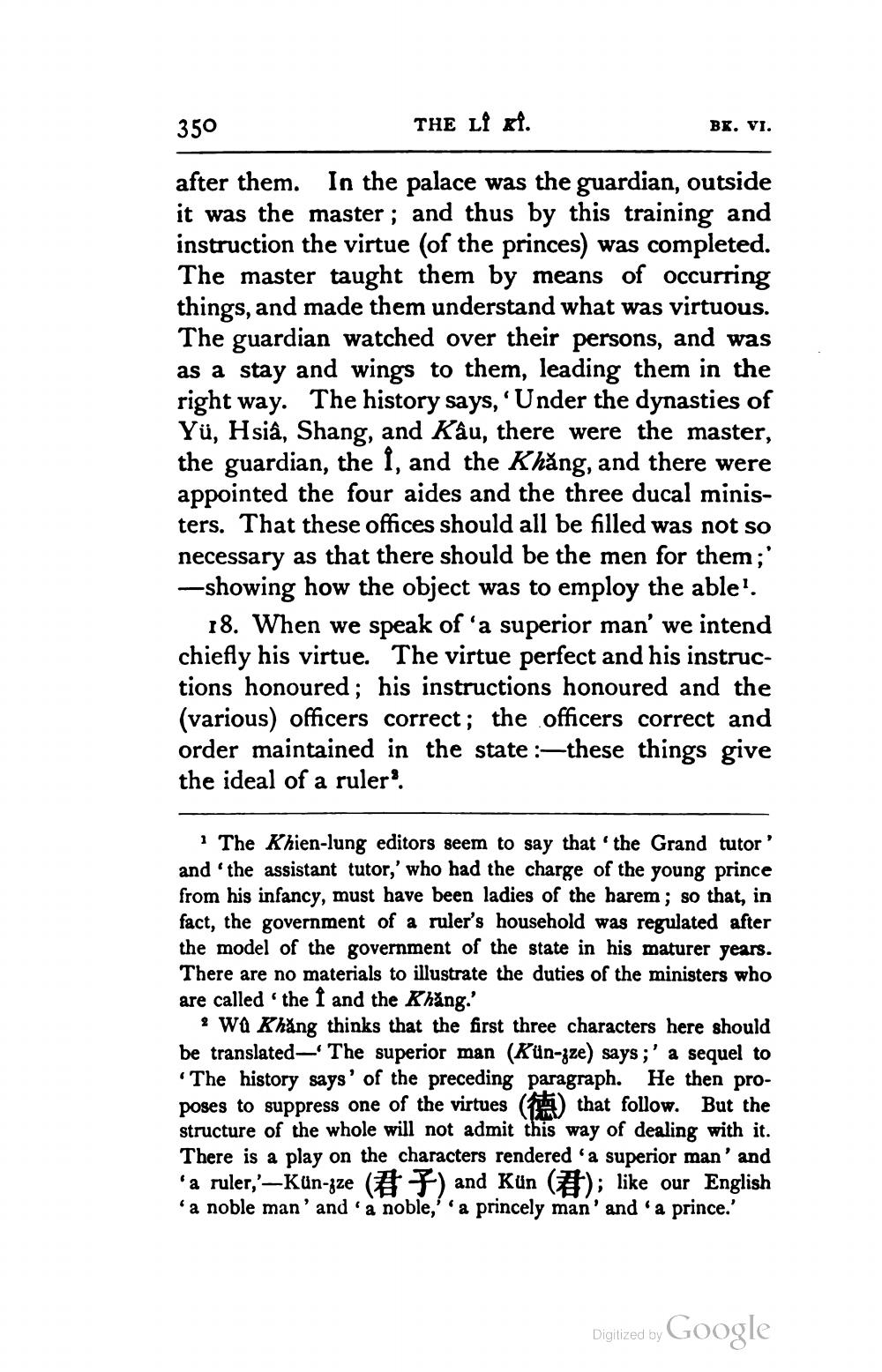________________
350
THE LÎ xf.
BK. VI.
after them. In the palace was the guardian, outside it was the master; and thus by this training and instruction the virtue (of the princes) was completed. The master taught them by means of occurring things, and made them understand what was virtuous. The guardian watched over their persons, and was as a stay and wings to them, leading them in the right way. The history says, 'Under the dynasties of Yü, Hsiâ, Shang, and Kâu, there were the master, the guardian, the I, and the Khăng, and there were appointed the four aides and the three ducal ministers. That these offices should all be filled was not so necessary as that there should be the men for them;' -showing how the object was to employ the able'.
18. When we speak of a superior man' we intend chiefly his virtue. The virtue perfect and his instructions honoured; his instructions honoured and the (various) officers correct; the officers correct and order maintained in the state :—these things give the ideal of a ruler.
1 The Khien-lung editors seem to say that the Grand tutor' and the assistant tutor,' who had the charge of the young prince from his infancy, must have been ladies of the harem; so that, in fact, the government of a ruler's household was regulated after the model of the government of the state in his maturer years. There are no materials to illustrate the duties of the ministers who are called the I and the Khăng.'
· Wa Khăng thinks that the first three characters here should be translated — The superior man (Rün-zze) says;' a sequel to
The history says' of the preceding paragraph. He then proposes to suppress one of the virtues that follow. But the structure of the whole will not admit this way of dealing with it. There is a play on the characters rendered 'a superior man' and 'a ruler,'-Kün-gze ( F) and Kün (); like our English 'a noble man' and ' a noble,' a princely man' and 'a prince.'
Digitized by Google




